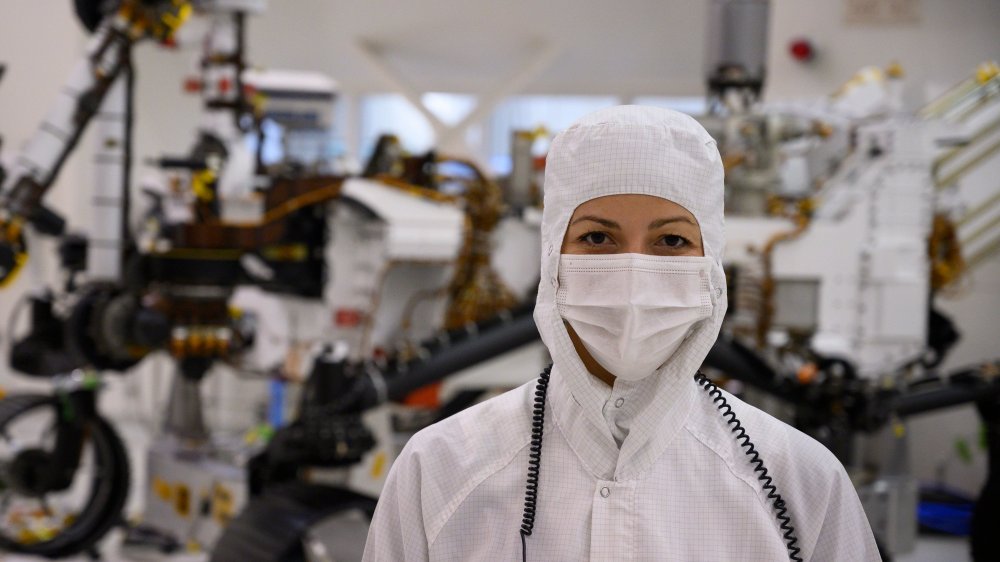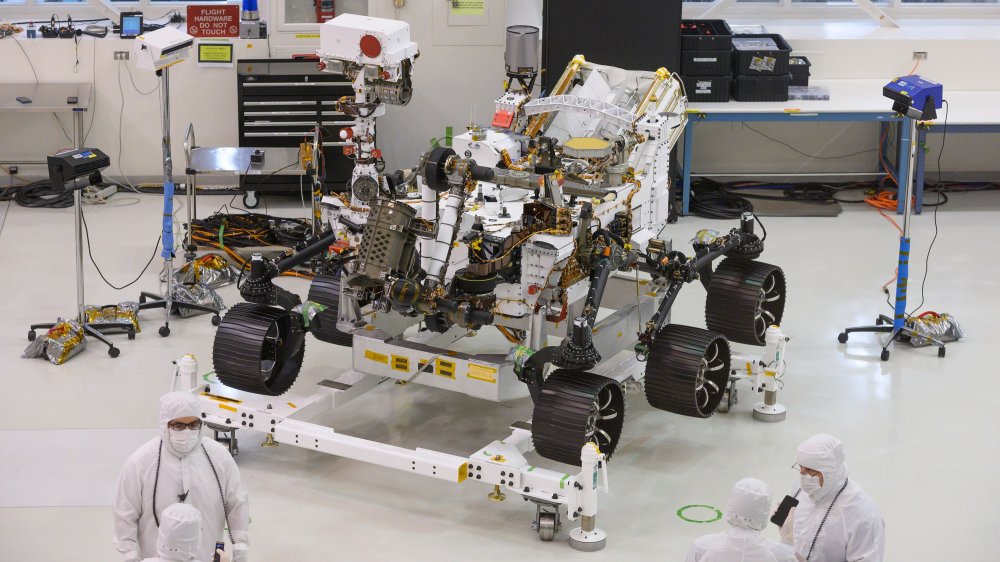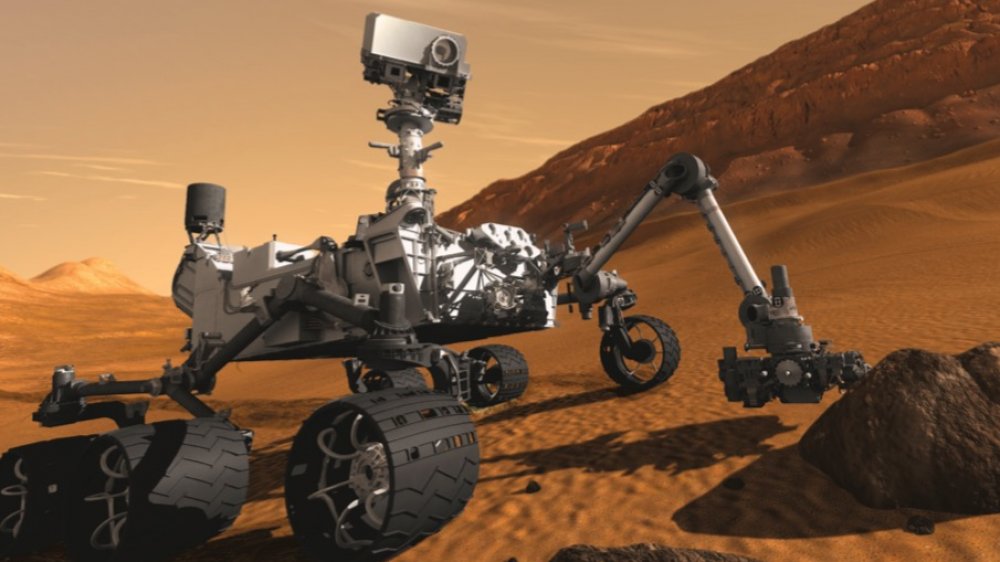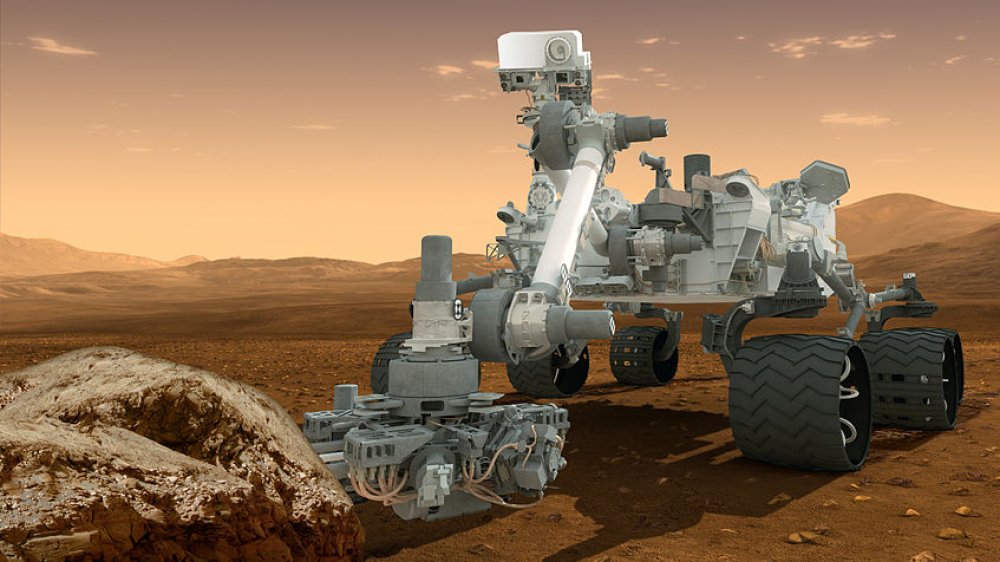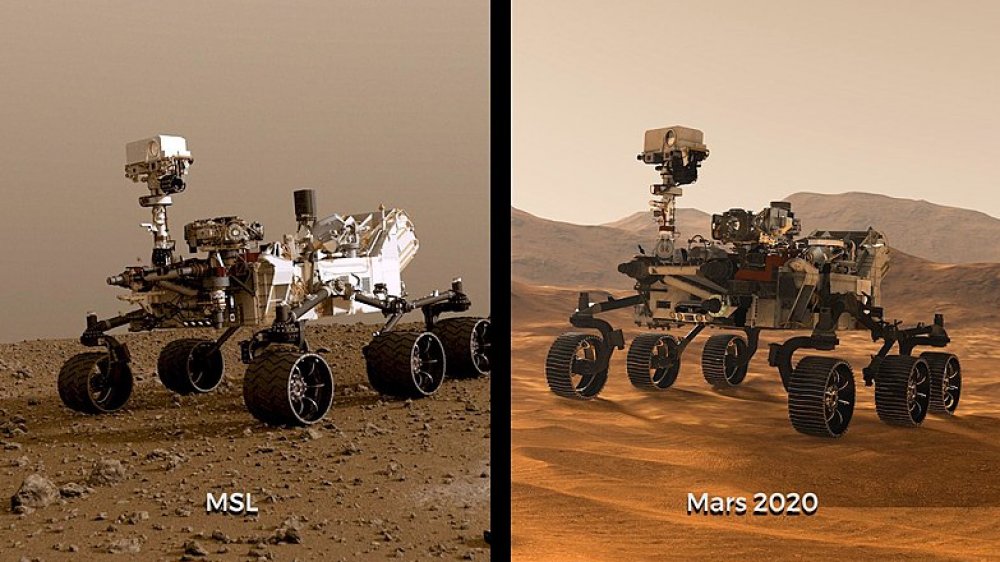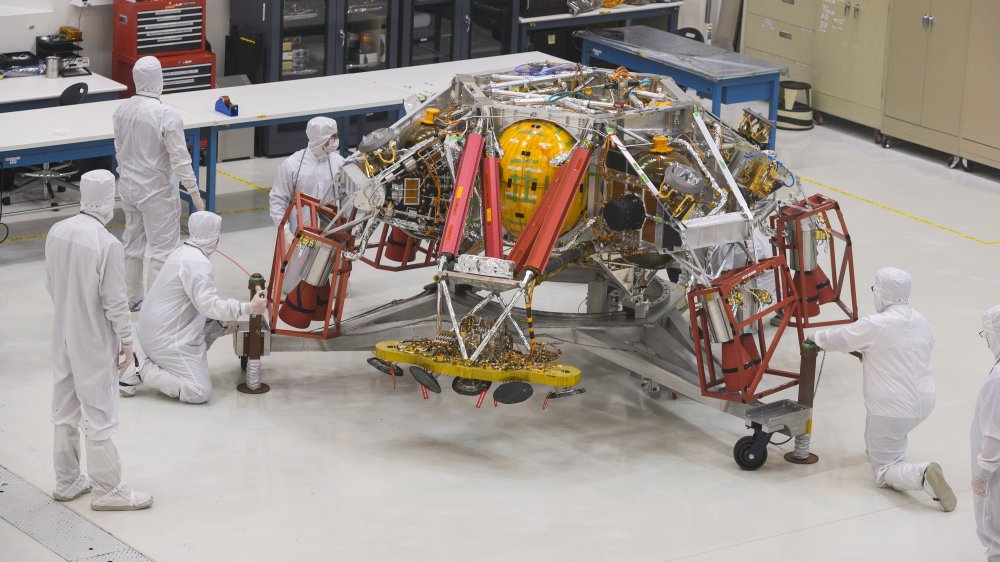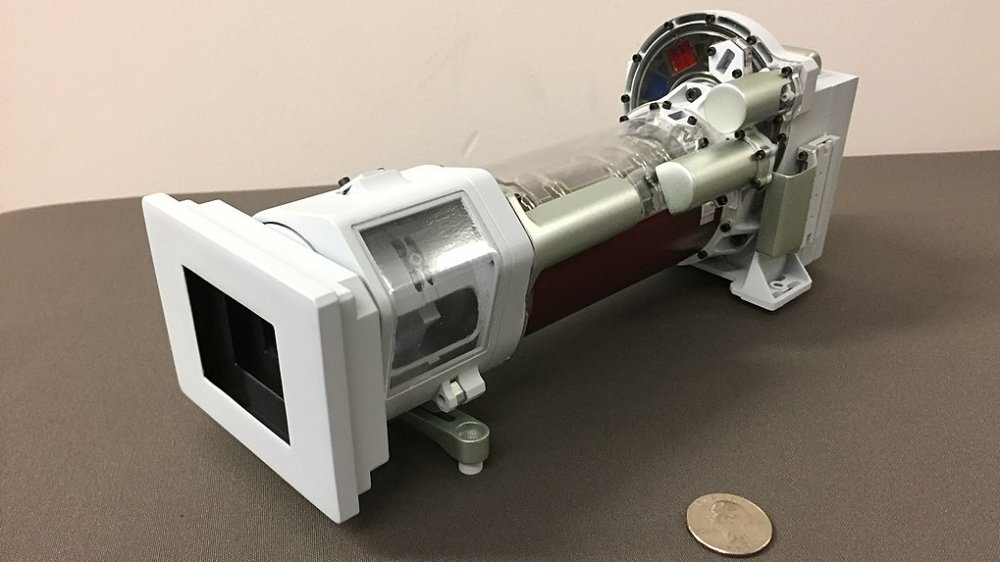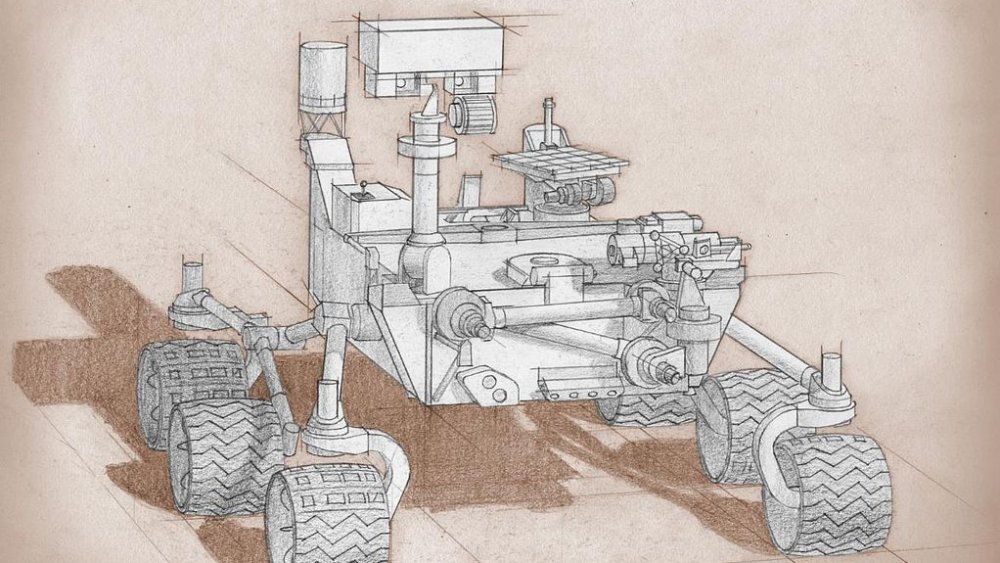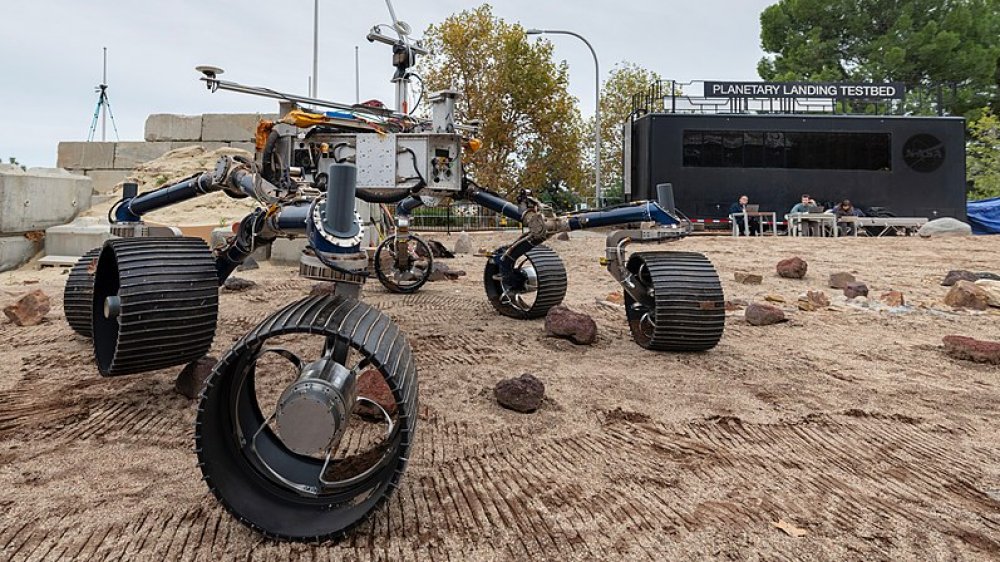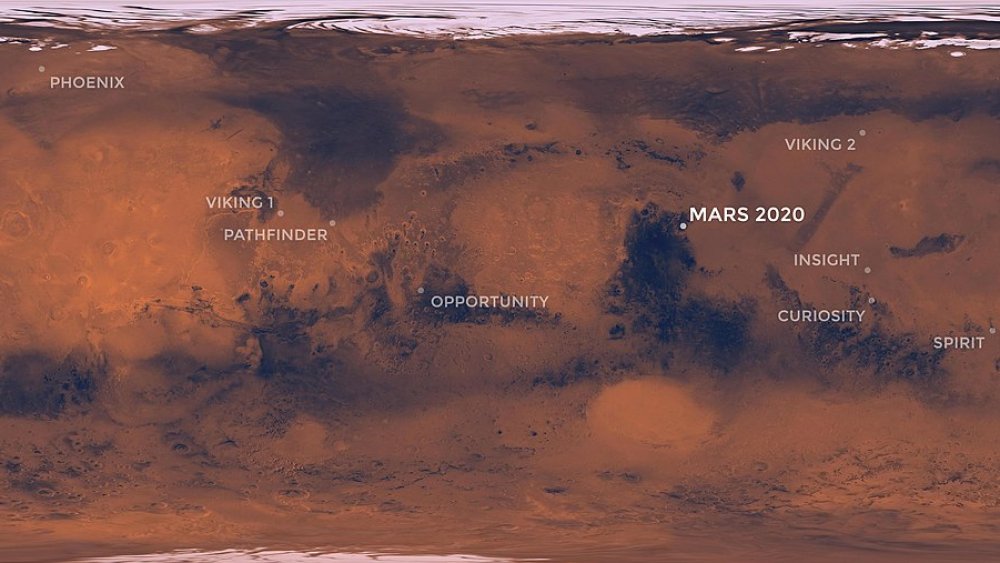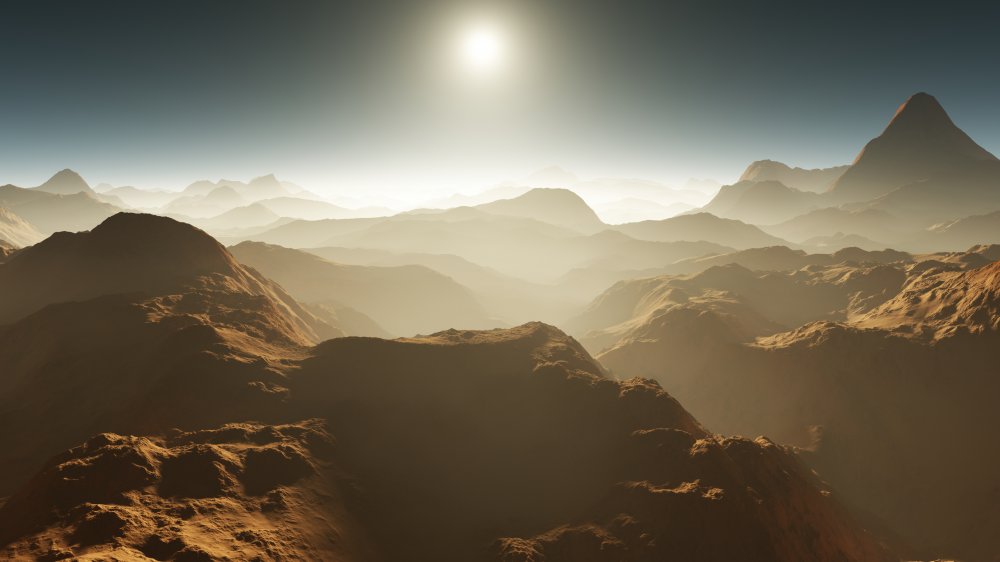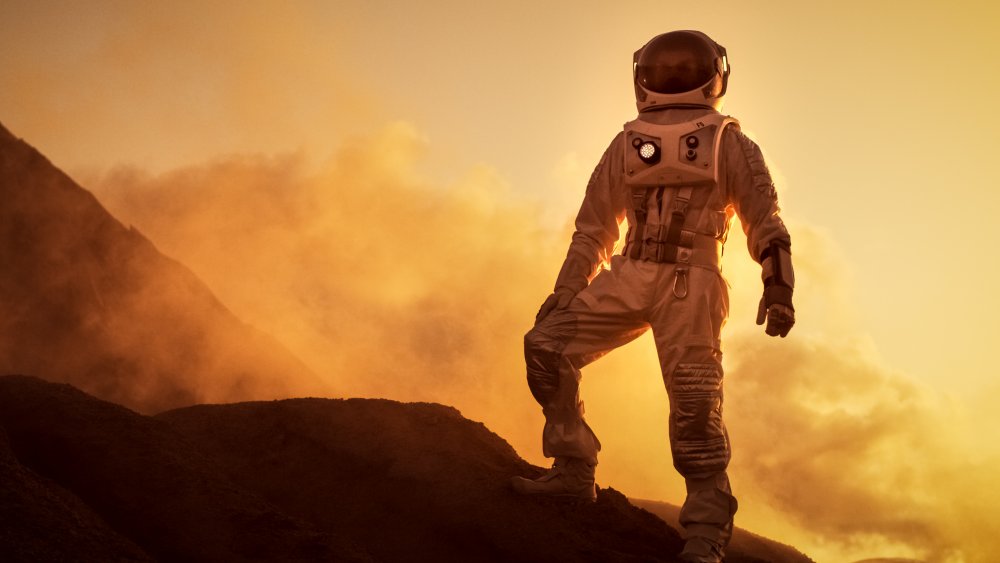The Mars 2020 Mission Explained
Hooray, we're finally going to Mars, and it's only a matter of time before we'll have a colony and then a civilization and before you know it, a bunch of badass Martian marines in Iron Man suits poised to defend their new world against everyone still living on the barely habitable planet Earth. Alas, though, Mars 2020 is still not a manned mission, in fact, a manned mission probably won't happen until at least the late 2030s, and from there it will be a long time before a few astronauts turns into Matt Damon turns into a colony turns into a civilization complete with badass Martin marines in Iron Man suits. Sorry.
We're taking baby steps, though, and we will be returning to the Red Planet this year with the still-unnamed Mars 2020 mission, which will look almost exactly like the last mission with a few notable exceptions. So don't expect to be wowed with memorable soundbites and the eventual conspiracy theories about how it all happened on a sound stage, but there will undoubtedly be some great moments and important discoveries. Here's what you can expect from Mars 2020.
We're sending another robot to Mars in 2020
We've had some success at landing rovers on Mars, but that doesn't mean we're ready to send actual living people yet. A robot doesn't require as much care and feeding as an astronaut, and there are some real logistical problems with keeping human beings safe in such a hostile place. So NASA is sending another robot. Yawn.
In fact according to NASA's own website, the Mars 2020 mission is going to very closely mirror the Curiosity mission, which landed on Mars on 2012, because NASA is cheap and they don't care how cool we think they are. Yes, the reason why this mission is going to look a lot like the last one is because NASA would like to save money. And hey, most of us are all for the government wasting less money, but maybe if NASA just took one or two billion out of the $100 billion the nation spends on corporate welfare each year to, you know, give the 2020 rover some rocket launchers or a torso like Arnold Schwarzenegger or something, then it would be a mission that most Americans could really get behind.
First a little background
If you've been getting most of your information about space from the Star Wars franchise, you may not be super well-versed in exactly what's been happening on the Martian front over the past few decades. We really started to take the Mars thing seriously in 2003 with the launch of the two rovers Spirit and Opportunity, but those missions weren't our first trips to Mars.
According to NASA, our relationship with Mars goes all the way back to 1965 when Mariner 4 shot the first photos of another planet from outer space. Since then, missions to Mars have been plenty — we even landed a spacecraft on the surface as early as 1975. But the Mars missions really came into their own in 2004 with Spirit and Opportunity. Those rovers were different because they were designed for the uneven and rugged Martian terrain, so they were a lot more mobile than previous rovers like the 1997 Mars Pathfinder, and they were packed with sensitive and sophisticated equipment dedicated to answering one important question: Was there ever life on the Red Planet?
Spirit and Opportunity were designed to last 90 Martin days in the harsh other-worldly environment, and they both exceeded expectations. Spirit lasted for 2,200 Martin days and Opportunity was still sending data back to Earth 14 years after it landed. Did they find signs of life? Sort of. Opportunity found hematite and spirit found carbon — both substances that are associated with a wet environment.
Curiosity still hasn't killed Curiosity
Curiosity is an adorable name for a robot, and for some reason no one at NASA thought it might kind of be bad luck to name their rover after the thing that has killed so very many felines. So far so good, though.
Curiosity has been exploring the Gale Crater since 2012, and during its time on the Red Planet it's made a lot of groundbreaking discoveries, like this this one: Radiation on Mars is not terrible, in fact it's pretty similar to the radiation experienced by astronauts on the International Space Station. Curiosity also discovered sulfur, hydrogen, phosphorus, carbon, nitrogen, and yes, oxygen, in a core sample it took from some Martian rock. These elements are all indicative of a habitable, aqueous environment. In other words, the Gale Crater was once a lake and it's possible there could have been life in it. So far Curiosity hasn't uncovered any fish bones, though, so that's a little disappointing.
According to NASA, Curiosity is currently on its way up the side of the 3-mile tall Mount Sharp, which is located inside the Gale Crater and was formed by the water that used to be there. What will it do when it gets to the top? Take in the view, maybe.
Two rovers are better than one
Curiosity is still functioning and still providing scientists with data, so why mess with a good thing? Well, Mars is a big planet so why limit yourself to exploring only one small part of it? According to NASA, Mars 2020 is similar to Curiosity, but it has a few advantages over its predecessor.
First, it's slightly longer and significantly heavier than Curiosity. It gathers samples a little differently, too. Curiosity pulverizes rock; Mars 2020 will collect intact core samples. Which would be cool if it could then, you know, send those core samples back to Earth via Martian UPS or something, but obviously it can't. Unlike most other government agencies, though, NASA at least has mastered patience. Those core samples will be placed in a cache where they can hopefully be retrieved by future missions (though probably not until 2026 or 2027) for eventual return to Earth, thus saving those future missions from having to also take core samples.
Curiosity has mostly been looking for signs of a once-habitable environment — Mars 2020 will go one step beyond that and look for signs of life itself. 2020 will be searching for the biosignatures of microbial organisms. Scientists don't expect to find anything still living — Mars is pretty inhospitable today — but they hope to be able to show that things once lived there. Meanwhile, Curiosity promises not to feel at all overshadowed by its bigger, more important sibling.
Mars 2020 will have superior landing capabilities
Let's not mince words, other Mars rovers stank at landing. It's true, no rover has ever landed as awesomely as Mars 2020 will land. At least, that's what NASA says. In fact Andrew Johnson (not that Andrew Johnson, he's dead), who is the manager of the guidance navigation control system, told CNN that 2020 will be able to land almost anywhere. "In past missions, the landing zone needed to be like a parking lot," Johnson said. "In the case of 2020, [we] can place it in craters, steep slopes, rock fields."
The new landing system — called the "Terrain Relative Navigation system" — is based on Curiosity's system but includes a sensor called "the lander vision system." The system takes photos during descent, which it then compares to a photographic map that was shot from orbit. It can use that data to identify landing hazards so that it can choose the safest nearby spot to touch down. Assuming there is one, and it's able to veer off course in time to avoid disaster. Fingers crossed.
Mars 2020 will have better eyes than Curiosity
Black and white television hasn't been a thing in the US since the 1960s, so it's kind of baffling that NASA, in its infinite wisdom, chose to equip Curiosity with 13 black and white cameras and only four that are capable of capturing images in color. According to NASA's engineering camera team lead Justin Maki, most of Curiosity's cameras are black and white "because that's all the rover really needs in order to detect rocks and other obstacles." Lame. To be fair, though, a lot of what we've seen from Curiosity was shot by those few color cameras, which are in charge of capturing all of the sciency images.
Mars 2020 will once again one-up its predecessor by featuring not 17 but 23 cameras, most of which are color. One of the cameras — called "Mastcam-Z," will be able to zoom and shoot panoramas. It will also be able to shoot high-definition video, which should give us a good long look at absolutely nothing, since the Red Planet is completely devoid of life and nothing ever happens there. That's not the only upgrade, though. 2020 will also have "ears," so it will be able to record the Martian wind and the sound of its own, lonely wheels crunching over the rocky, desolate surface of the planet. Cool.
Bigger, faster, better
And because Curiosity isn't already feeling emasculated by its younger, more agile, better seeing, and actually-hearing cousin, Mars 2020 will also have more muscle. Yes, according to NASA, the new rover will have six wheels like Curiosity, but they will be six bigger, badder wheels. Because Curiosity's wheels have endured quite a bit of wear during just normal activities — like driving around over pointy rocks — designers decided to equip 2020 with wheels made from thicker aluminum that are narrower than Curiosity's but have a larger diameter. And while Curiosity can attain a top speed of just .09 miles per hour, 2020 is blindingly fast at just under .10 miles per hour, so you know basically the same, and in a race the tortoise would totally beat both of them.
Don't laugh though, it's not like scientists put rovers on the planet to see how quickly they could circumvent the red globe. The slow speeds work for the rovers because they're supposed to be exploring Mars rock-by-rock, which is pretty hard to do at 55 mph. But being slow also has another advantage — slow vehicles don't consume as much energy as fast vehicles do, which means that the rover can keep exploring the Martian surface for a lot longer than it would if it was designed for speed.
More autonomy for Mars 2020, too
And in what will surely be the final blow to Curiosity's now fragile ego, Mars 2020 will also be smarter than Curiosity. Ouch.
According to NASA, a Mars rover has to wait for commands from its human overlords — err, NASA — before it can do anything or go anywhere. That means that the rover is essentially crippled until it gets its set of commands for the day, which can take up to seven hours for the rover team to put together. Curiosity is almost entirely dependent on the commands it receives from Earth, but Mars 2020 will have a much higher degree of autonomy. It will also be able to calculate its path five times faster than its predecessor, which means it's basically smarter. The ability to self-drive means it will take less time — about five hours — for the team to put together the rover's set of daily instructions, which ultimately means that 2020 will provide Earth with more data over its lifetime. Sorry, Curiosity.
Mars 2020 will explore an ancient watershed
The good news for Curiosity is that its younger cousin won't ever show up at the same parties or spend Christmas dinner bragging about all of its accomplishments while Curiosity sulks in a corner. In fact Curiosity and 2020 won't ever cross paths — while Curiosity is busy in the Gale Crater, 2020 will be exploring Jezero, a crater 3,760 miles away. So as long as 2020 doesn't post a bunch of photos of its awesome life on Facebook, Curiosity should be blissfully unaware of its achievements.
So why Jezero? As it turns out, Jezero is the perfect place to look for signs of past life. According to the Planetary Society, the 28-mile wide crater once contained a lake, and there is a very well-preserved river delta inside of it. In that area, water eroded rock and deposited sediment much like watershed systems do on Earth. Those sediments might contain evidence of ancient life. Jezero is a more dangerous place to land than Gale, but NASA hopes that 2020's superior landing capabilities will be up to the challenge. Just don't tell Curiosity.
Oh the weather outside SUCKS
In The Martian, Matt Damon gets his butt kicked by a massive dust storm. That wasn't something someone just made up for the movie, either. Well, it sort of wasn't made up for the movie. Mars does have dust storms but according to Science Alert, they aren't massive, at least not compared to some of the hurricanes we have here on Earth. They can cause damage, though, as the hapless Opportunity rover learned when it was taken down by one. So before we can put people on Mars, we need to know what the actual deal is with Martian weather.
According to CNN, 2020 will carry a suite of sensors called the "Mars Environmental Dynamics Analyzer," or MEDA, which will study the dust and radiation on the surface of Mars, and learn more about how those things might change with the seasons. Because even though seasons on Mars are basically just "really cold" and "unbearably cold" and "kill me please," Mars does have seasons. MEDA will help scientists understand how temperature, wind, and pressure affect the surface of the planet, which will give them a better idea about how humans and their stuff might do if subjected to those conditions for long periods of time.
Mars 2020 will help us figure out how humans might fare on the surface
2020 is more than just a fact-finding mission — it will carry a number of experiments designed to answer questions about human exploration of the Red Planet. One of these experiments will tackle one of the big logistical problems that goes along with exploring a planet that lacks a breathable atmosphere. According to CNN, the MOXIE experiment will take carbon dioxide out of the Martian atmosphere and convert it into oxygen. It won't make enough for a person (it won't need to, since the world's future Martian astronauts are mostly still in middle school at this point in history), but it will hopefully work as designed and pave the way for a larger, robust system that will make it possible to travel to Mars without carrying a lot of oxygen.
Mars 2020 will also start looking into another problem — astronaut exposure to dust and radiation, which are constantly bombarding the surface of the Red Planet. 2020 will carry five samples of spacesuit material, including a piece of a helmet and four pieces of fabric. An instrument will study what happens to those materials in the presence of dust and Mars' ultraviolet radiation.
Let's make rocket fuel
It's all well and good to land on Mars, but most astronauts probably want to go home again after the mission is over. Unfortunately, it will take between 33 and 50 tons of fuel to lift off from the Martian surface, which is a lot of weight to have to carry across the solar system.
Because it's really expensive and impractical to pack all that stuff with you on a 180 million mile journey, Mars 2020 will prove an important concept and hopefully eliminate the need to bring a bazillion tons of rocket fuel all the way from Earth on every single mission to Mars. According to NASA, the oxygen-generating MOXIE experiment that 2020 will have on board will do more than just figure out how to give astronauts air to breathe while they're on the surface of the Red Planet. If MOXIE can make liquid oxygen from the Martin atmosphere, then larger versions of the technology could provide around three quarters of the propellant astronauts will need for the entire mission. That's a critical piece in figuring out how to make a manned mission feasible.
Kids will choose the name for the Mars 2020 rover
Regardless of how much you've learned about the 2020 Mars mission, your most burning question remains. Are they really going to keep that lame, uninspired name? The answer is a resounding "no." In fact, in its never-ending apparent quest to be adorable, NASA held a competition to rename the 2020 mission, inviting kids from all over the nation to submit their ideas for an adorable name to go with the adorable fact that they're having a contest that can only be entered by adorable children who won't complain about the lack of a cash prize. Some of the finalists from the pool of 28,000 entries: Endurance, Perseverance, Courage, and Promise. Aw.
Wait, though, if there were 28,000 kids entering this contest and there are 171,476 words in the English language and you rule out the words that most definitely wouldn't end up in a Mars Mission naming competition (like "garbage," and "the"), isn't it very, very likely that more than one kid came up with each one of those names independently of each other and aren't those kids who didn't get credit for coming up with the exact same name as some other kid going to be super upset at NASA? That's a great idea, guys, have a competition that makes little kids cry. Jeez.
Anyway, if you're interested, Spaceflight Now says NASA will be announcing the new name in early March.
